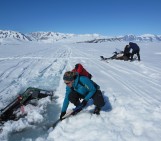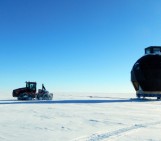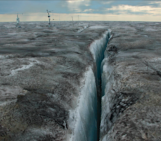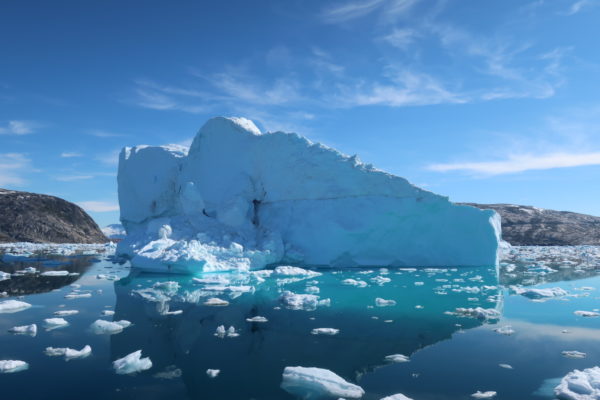
Icebergs are ubiquitous in Greenland’s fjords, melting and releasing freshwater as they float towards the open ocean. The amount of freshwater released from these icebergs can be vast – the equivalent of around 50,000 Olympic swimming pools per day in some fjords. New research reveals that this freshwater causes fjord currents to speed-up, which can actually increase the amount of heat delivered to the Greenland Ice Sheet.
Ocean-driven retreat of Greenland’s tidewater glaciers
Over the past two decades, Greenland’s tidewater glaciers (glaciers which flow directly into the ocean) have retreated, thinned and accelerated. The leading hypothesis for this change is that more oceanic heat is being delivered to glacier calving fronts (the part of the glacier directly in contact with the ocean), causing them to melt faster. Understanding the processes affecting the rate of oceanic heat delivery, known as oceanic heat flux, to Greenland’s tidewater glaciers has therefore been a focus of recent research. Our new research uses modelling to investigate how icebergs affect oceanic heat flux towards Helheim Glacier, which is one of Greenland’s major tidewater glaciers and which drains into Sermilik Fjord, in east Greenland (see Figure 1 for location).
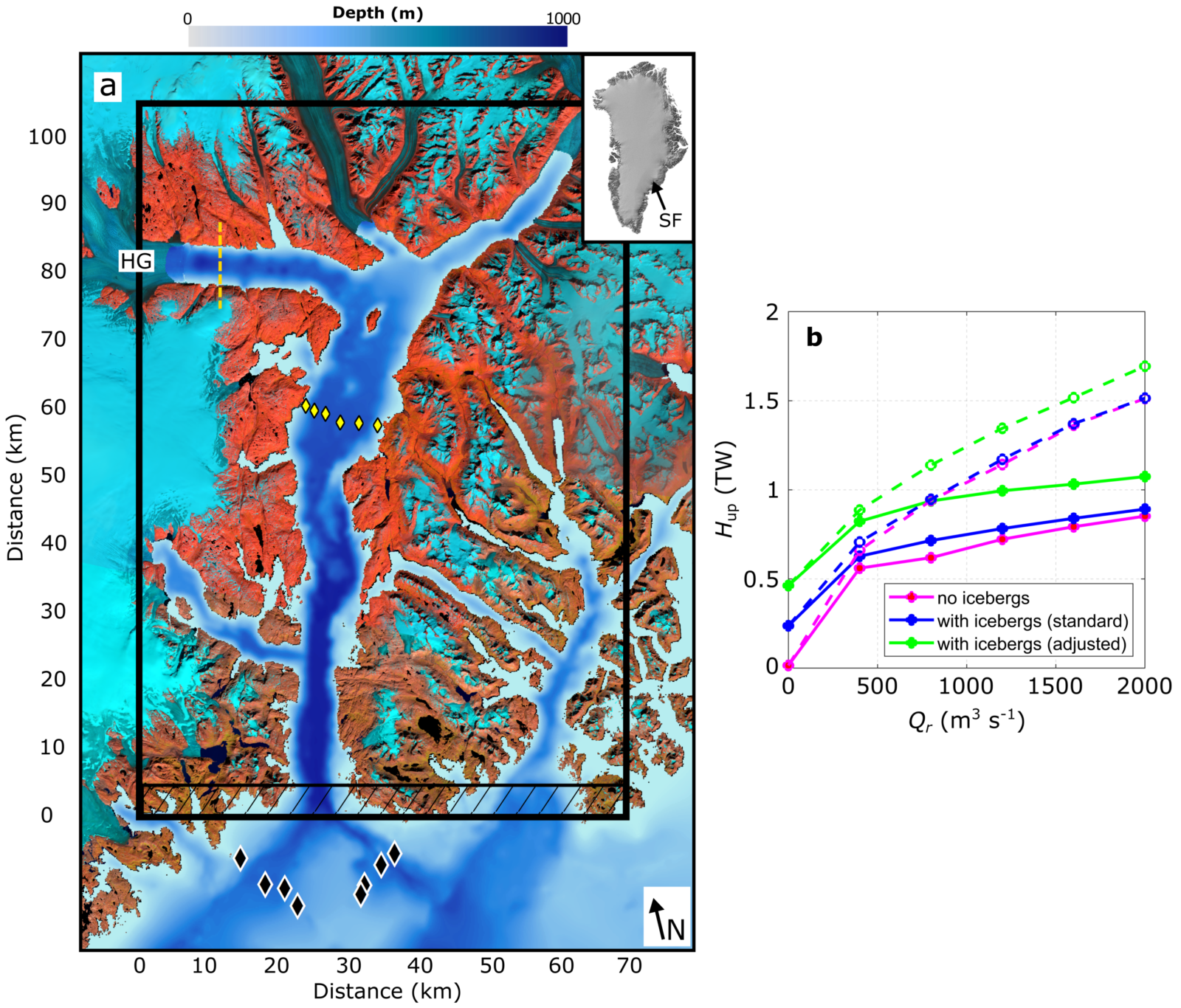
Figure 1: (a) Location map of Sermilik Fjord (SF) with Helheim Glacier indicated (HG), east Greenland. The blue shading shows fjord bathymetry (seafloor topography) (Morlighem et al., 2017) with deepest water depths in dark blue, overlaid on a satellite image of the area, showing the ice sheet in light blue and ice free areas in brown and orange. The black box outlines the spatial extent examined in the model and the yellow dashed line indicates the flux gate across which oceanic heat flux is calculated in the model. Adapted with permission from Figure 1 of Davison et al. (2020).
(b) Relationship between oceanic heat flux (Hup) and ice sheet runoff (Qr) without icebergs (magenta), with icebergs and standard melt rate parameter values (blue) and with adjusted parameter values (green). The dashed and solid lines represent different ways of modelling ice sheet runoff. Adapted with permission from Figure 6 of Davison et al. (2020).
Iceberg melting affects oceanic heat flux to glaciers
Our model is a realistic representation of Sermilik Fjord (Figure 1a) and is the first of its kind to include icebergs at this scale. As the icebergs in the model melt, they cool the surrounding water and release meltwater. Even though it is cold, because the meltwater is fresh, it is less dense and has to rise towards the fjord surface, which generates currents within the model – usually, these currents flow away from the glacier near the fjord surface and whilst deeper currents flow towards the glacier. In Greenland’s fjords, the warmest water, which is responsible for delivering most oceanic heat to tidewater glaciers, is found at depth. Our research found that in Sermilik Fjord, icebergs do not cool this warm water much, but they do cause it to flow faster towards Helheim Glacier. The net effect of icebergs is therefore to increase oceanic heat flux towards Helheim Glacier. This is visible in Figure 1b: the green and blue lines, which represent model results with icebergs, are above the magenta lines, which are the model results without icebergs. More specifically, we show that as iceberg freshwater flux increases (due to increased ice sheet runoff, due to more icebergs or due to different model parameters), so does oceanic heat flux to Helheim Glacier (see also this previous post). Our results show that icebergs are therefore an important component of the glacier-fjord system and may have influenced ocean-driven retreat of Greenland’s tidewater glaciers over the past two decades.
Further reading
- Enderlin, E. M., Hamilton, G. S., Straneo, F., and Sutherland, D. A. 2016. Iceberg meltwater fluxes dominate the freshwater budget in Greenland’s iceberg-congested glacial fjords. Geophysical Research Letters. 43, 11, 287-11, 294, doi:10.1002/2016GL070718.
- Moon, T., Sutherland, D. A., Carroll, D., Felikson, D., Kehrl, L., and Straneo, F. 2018. Subsurface iceberg melt key to Greenland fjord freshwater budget. Nature Geoscience, doi:10.1038/s41561-017-0018-z.
- Moyer, A. N., Sutherland, D. A., Nienow, P. W., Sole, A. J. 2019. Seasonal variations in iceberg freshwater flux in Sermilik Fjord, southeast Greenland from Sentinel-2 imagery. Geophysical Research Letters. 46, 8903-8912, doi:10.1029/2019GL082309.
Edited by Jenny Arthur and Marie Cavitte
 Ben Davison is a PhD Student at the University of St Andrews, UK, but is starting as a Research Fellow in Earth Observation of the Polar Regions in March 2021. He investigates the dynamics of Greenland’s glacier-fjord systems using satellite observations and numerical modelling. He tweets as @arctic_glaciers. Contact Email: bd41@st-andrews.ac.uk
Ben Davison is a PhD Student at the University of St Andrews, UK, but is starting as a Research Fellow in Earth Observation of the Polar Regions in March 2021. He investigates the dynamics of Greenland’s glacier-fjord systems using satellite observations and numerical modelling. He tweets as @arctic_glaciers. Contact Email: bd41@st-andrews.ac.uk

